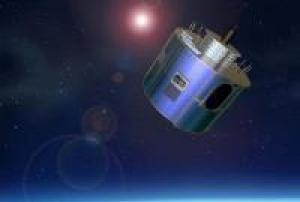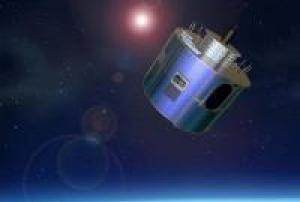Extreme Temperature
Definition
Facts and figures
Further information
UN-SPIDER Regional Support Offices with hazard-specific expertise
Related content on the Knowledge Portal
Today, weather satellites scan the whole Earth, meaning not a single tropical storm or severe weather system goes undetected. The early detection and warnings they provide have saved thousands of lives.
Meteosat data is of unique value to nowcasting of high impact weather in support of safety of life and property.
It has been shown to improve weather forecasts and severe weather warnings which, in turn helps limit damage to property and benefits industry e.g. transport, agriculture and energy.
Meteosat-9 provides a backup service to Meteosat-11 Full Earth scanning and a gap filling service to Meteosat-10 Rapid Scanning.Instruments:
read more
GERB (Geostationary Earth Radiation Budget)
MSG Comms (Communications Package for MSG)
SEVIRI (Spinning Enhanced Visible and Infra-Red Imager)
22/12/2005NOAA-18, known before launch as NOAA-N, is a weather forecasting satellite run by NOAA. NOAA-N (18) was launched on May 20, 2005, into a sun-synchronous orbit at an altitude of 854 km above the Earth, with an orbital period of 102 minutes. It hosts the AMSU-A, MHS, AVHRR, Space Environment Monitor SEM/2 instrument and High Resolution Infrared Radiation Sounder (HIRS) instruments, as well as the SBUV/2 ozone-monitoring instrument. It is the first NOAA POES satellite to use MHS in place of AMSU-B.
APT transmission frequency is 137.9125 MHz (NOAA-18 changed frequencies with NOAA-19 on June 23, 2009).
Instruments:
read more
AMSU-A (Advanced Microwave Sounding Unit - A)
AVHRR/3 (Advanced Very High Resolution Radiometer /…20/05/2005Today, weather satellites scan the whole Earth, meaning not a single tropical storm or severe weather system goes undetected. The early detection and warnings they provide have saved thousands of lives.
Meteosat data is of unique value to nowcasting of high impact weather in support of safety of life and property.
It has been shown to improve weather forecasts and severe weather warnings which, in turn helps limit damage to property and benefits industry e.g. transport, agriculture and energy.
Meteosat-8 operates over the Indian Ocean performing Full Earth scanning. It also provides Search and Rescue monitoring and Data Collection Platform relay service (which includes relay of Tsunami warnings).Instruments:
GERB (Geostationary Earth Radiation Budget)
MSG Comms (Communications Package for MSG)
SEVIRI (Spinning Enhanced Visible and Infra-Red Imager)
28/08/2002Aqua, Latin for water, is a NASA Earth Science satellite mission named for the large amount of information that the mission is collecting about the Earth's water cycle. The Aqua mission is a part of the NASA-centered international Earth Observin System (EOS). Aqua was formerly named EOS PM, signifying its afternoon equatorial crossing time.
Aqua was launched on May 4, 2002, and has six Earth-observing instruments on board, collecting a variety of global data sets. Aqua was originally developed for a six-year design life but has now far exceeded that original goal and is expected to be operating into successfully into the early 2020s. It continues transmitting high-quality data from four of its six instruments, AIRS, AMSU, CERES, and MODIS, and reduced quality data from a fifth instrument, AMSR-E. The sixth Aqua instrument, HSB, collected approximately nine months of high quality data but failed in February 2003.Instruments:
read more
Atmospheric Infrared…04/05/2002Terra explores the connections between Earth's atmosphere, land, snow and ice, ocean, and energy balance to understand Earth's climate and climate change and to map the impact of human activity and natural disasters on communities and ecosystems. It was launched on 18 December 1999 and has far exceeded its design life, having a strong chance of operating successfullty into the early 2020s.
Terra is in a circular sun-synchronous polar orbit that takes it from north to south (on the daylight side of the Earth) every 99 minutes.On October 6, 2018 Terra completed 100,000 orbits around Earth.
Approximately the size of a small school bus, the Terra satellite carries five instruments that take coincident measurements of the Earth system.
Instruments:
read more
Advanced Spaceborne Thermal Emission and Reflection Radiometer (ASTER): Creates high resolution images of water, ice, clouds and the land surface using Shortwave Infrared…18/12/1999The government-owned Landsat 7 was successfully launched on April 15, 1999, from the Western Test Range of Vandenberg Air Force Base, California, on a Delta-II expendable launch vehicle. The Earth observing instrument on Landsat 7, the Enhanced Thematic Mapper Plus (ETM+), replicates the capabilities of the highly successful Thematic Mapper instruments on Landsats 4 and 5.
read more
Landsat 7 is the most accurately calibrated Earth-observing satellite, i.e., its measurements are extremely accurate when compared to the same measurements made on the ground. Landsat 7’s sensor has been called “the most stable, best characterized Earth observation instrument ever placed in orbit.” Landsat 7’s rigorous calibration standards have made it the validation choice for many coarse-resolution sensors.
Considered a calibration-triumph, the Landsat 7 mission went flawlessly until May 2003 when a hardware component failure left…15/04/1999NOAA-15 (designated NOAA-K before launch) is one of the NASA-provided TIROS series of weather forecasting satellite run by NOAA. It was launched on May 13, 1998, and is currently operational, in a sun-synchronous orbit, 807 km above the Earth, orbiting every 101 minutes. It hosts the AMSU-A and AMSU-B instruments, the AVHRR and High Resolution Infrared Radiation Sounder (HIRS/3) instruments, as well as a Space Environment Monitor (SEM/2).
Instruments:
read more
AMSU-A (Advanced Microwave Sounding Unit - A)
AMSU-B (Advanced Microwave Sounding Unit - B)
AVHRR/3 (Advanced Very High Resolution Radiometer/3)
HIRS/3 (High Resolution Infra Red Sounder/3)
S&RSAT (Search & Rescue Satellite-Aided Tracking System)
DCS/s (Data Collection System/2)
SEM/MEPED (SEM/Medium energy proton detector)
SEM/…13/05/1998Mapping for Disaster Risk Management: Using UN-SPIDER Recommended Practices and Digital Twin for Effective Flood Hazard Depiction
Effective flood mapping and modeling are crucial for disaster risk management, enabling authorities and communities to better prepare for and respond to extreme weather events. The SPEAR Project, by the Center for Remote Sensing of Land Surfaces (ZFL) at the University of Bonn and UN-SPIDER, works to support disaster risk management activities through innovative Earth Observation methods, with a regional focus on the African continent.
A key component of this initiative is the development of step-by-step mapping guides by UN-SPIDER, called “Recommended Practices” (RPs). These procedures, available through the UN-SPIDER knowledge portal, provide guidance on creating information products, such as flood maps. The RPs are continually refined through ongoing research and are designed to guide users—regardless of their experience with GIS and…
read moreThe Copernicus Climate Change Service (C3S), along with the World Meteorological Organization (WMO) have recently released their 2023 European State of the Climate report (ESOTC 2023), which included a number of key findings in regards to the climatological conditions around Europe, including and overview of the extensive flooding and temperature conditions around the region.
Along with a variety of maps detailing the differential coverage and intensity of these conditions, they have found that the temperatures in Europe were above average for 11 months of the year, and a third of the river networks exceeded the ‘high’ flood threshold (with 16% reaching the ‘severe’ flood threshold).
In a press release containing an overview of the report, the organizations discussed a number of topics including the general trend of climate change and warming temperatures, the subsequent health impacts these may have on the people in Europe, a brief discussion on the seasonal…
read more06/05/2024











